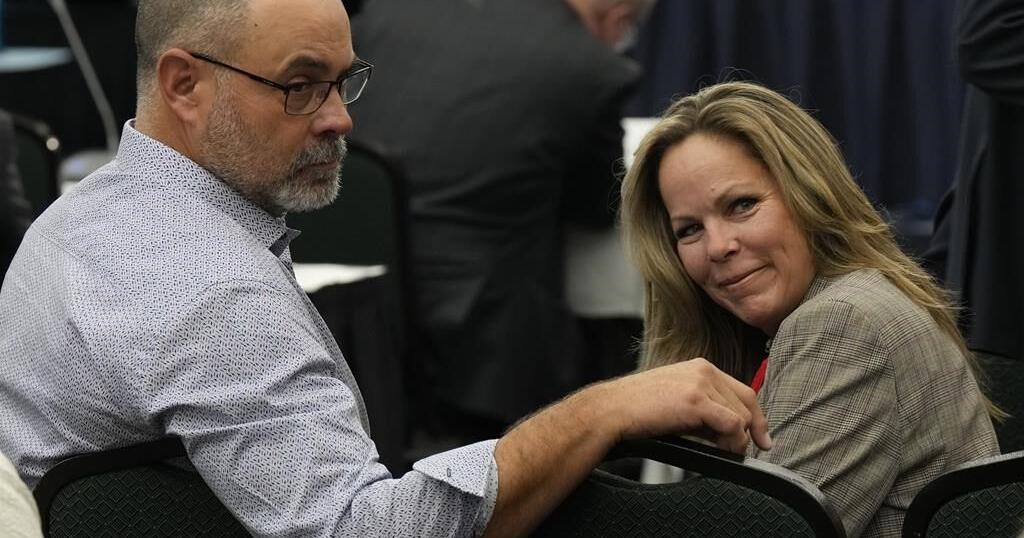Here is a roundup of stories from CanadaNewsMedia designed to bring you up to speed…
Lich and Barber trial to hear closing arguments
The long, drawn-out criminal trial of “Freedom Convoy” organizers Tamara Lich and Chris Barber is winding down as lawyers prepare to deliver their final arguments this week.
They were among several organizers who brought a huge number of demonstrators and big-rig trucks to Ottawa in 2022 to protest pandemic-era public health restrictions and vaccine mandates.
Their criminal trial began in September 2023 and has been plagued with delays that have dragged the proceedings on for nearly a year.
Lich and Barber are both accused of mischief, intimidation and several charges related to counselling others to break the law.
Barber also faces a charge of counselling others to disobey a court order.
Here’s what else we’re watching…
Suspect arrested, second sought in Alberta manhunt
RCMP in Alberta say one of two suspects wanted in a deadly shooting east of Calgary last week has been arrested, but the search continues for the other.
With assistance from the Edmonton Police Service, Mounties announced Monday night they arrested a 35-year-old suspect in the Alberta capital on August 8.
Arthur Wayne Penner is charged with first-degree-murder in the death of Airdrie resident Colin John Hough, as well as attempted murder of another individual.
RCMP are asking for the public’s help in the search for a second suspect, 28-year-old Elijah Blake Strawberry. A warrant has been issued for his arrest on a charge of second-degree murder in Hough’s death.
A manhunt began for the suspects on August 6 following the noon-hour shooting of two men who were doing work along a roadway in Rocky View County, and a county truck was stolen from the scene.
Banff rejects summer pedestrian zone in plebiscite
Banff residents have given a thumbs down to a pedestrian zone in the community’s downtown, rejecting the idea in a plebiscite Monday.
The Town of Banff posted unofficial results of the vote on its website, saying 1,328 votes were cast against the town council’s decision to have a pedestrian zone on Banff Avenue every summer, from the May long weekend to Thanksgiving long weekend.
It says 1,194 voted in favour of the pedestrian zone.
Begun as a pandemic response in the summer of 2020, the mountain town has closed a section of the avenue to vehicles so people could safely enjoy the street full of shops and restaurants.
It’s been popular with visitors but some residents expressed concern about cars and trucks clogging up side streets.
Racialized workers less likely to be unionized
Black and racialized workers in Canada are less likely to be represented by a union, according to a new report.
The report released Tuesday by the Centre for Future Work found that a quarter of racialized workers are covered by a union contract, compared with one third of non-racialized workers. The gap was even wider for racialized women.
Statistics Canada only recently started collecting the more detailed labour force data that made this report possible, said Stanford.
Hourly pay for racialized workers was almost 10 per cent lower than non-racialized workers in 2022, the report said, again with a wider gap for racialized women.
According to the report, racialized workers are disproportionately represented in sectors of the economy where contract and temporary jobs dominate, with limited job security and benefits, including in the gig economy.
Nova Scotia launches take-home STI testing kit
Nova Scotia is rolling out a take-home kit to test for sexually transmitted infections in hopes of reducing barriers to vital sexual health care.
Dr. Todd Hatchette, an infectious disease specialist who is the clinical director for Halifax’s STI clinic, says the province is seeing an increase in rates of gonorrhea, chlamydia and syphilis, and the best line of attack is to make it easier for people to get tested.
Hatchette says because many STIs do not present symptoms, the best way to address sexually transmitted illnesses is through a “seek and destroy” kind of approach.
That’s the idea behind a new program launched last month in the Halifax and Truro areas that involves an online form people can fill out to see if they qualify for a take-home STI test kit.
Hatchette says a similar program exists in Ontario, but this is the first of its kind in Atlantic Canada.
This report by The Canadian Press was first published August 13, 2024.
